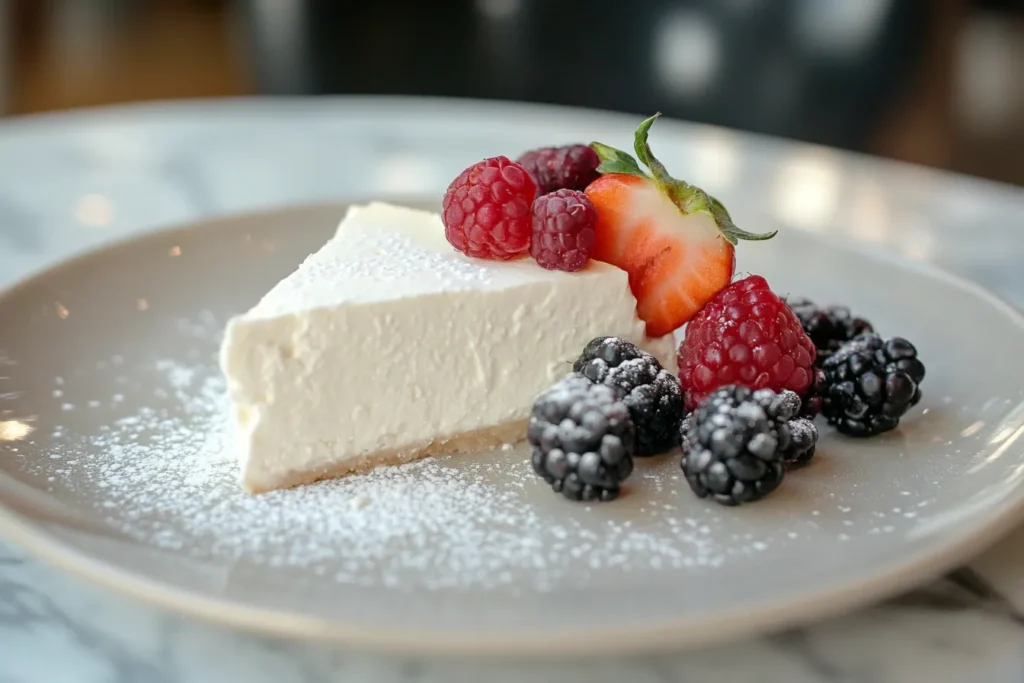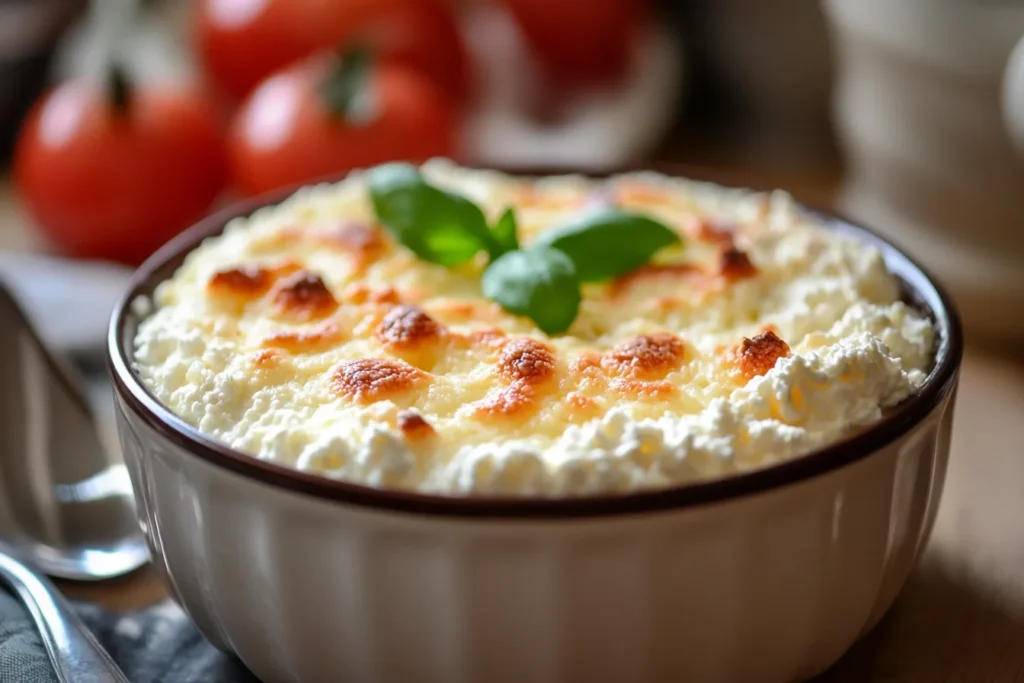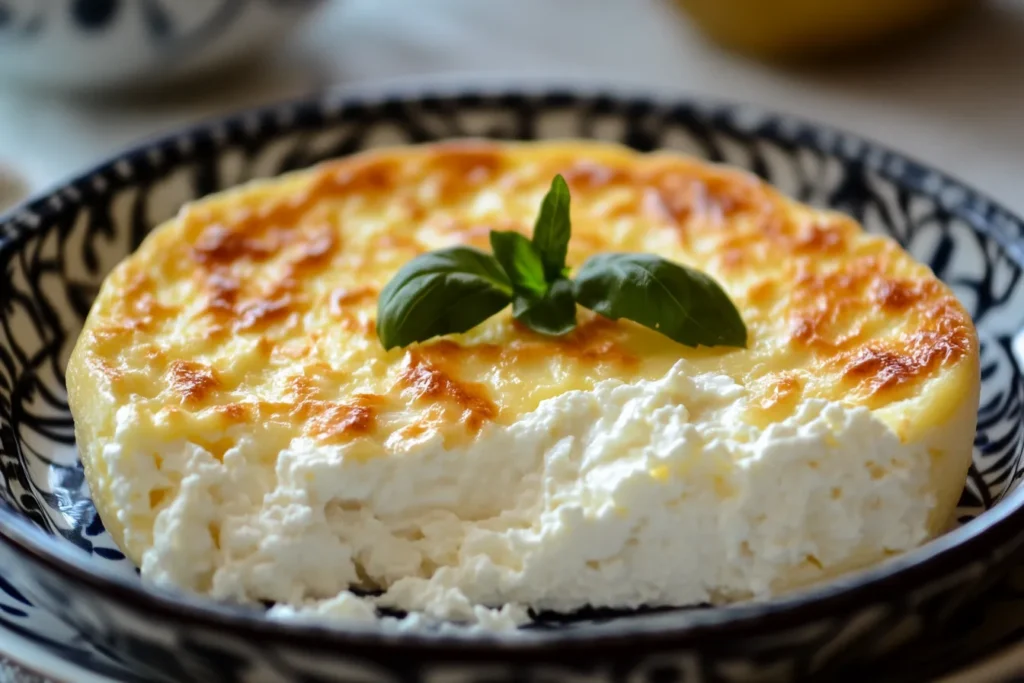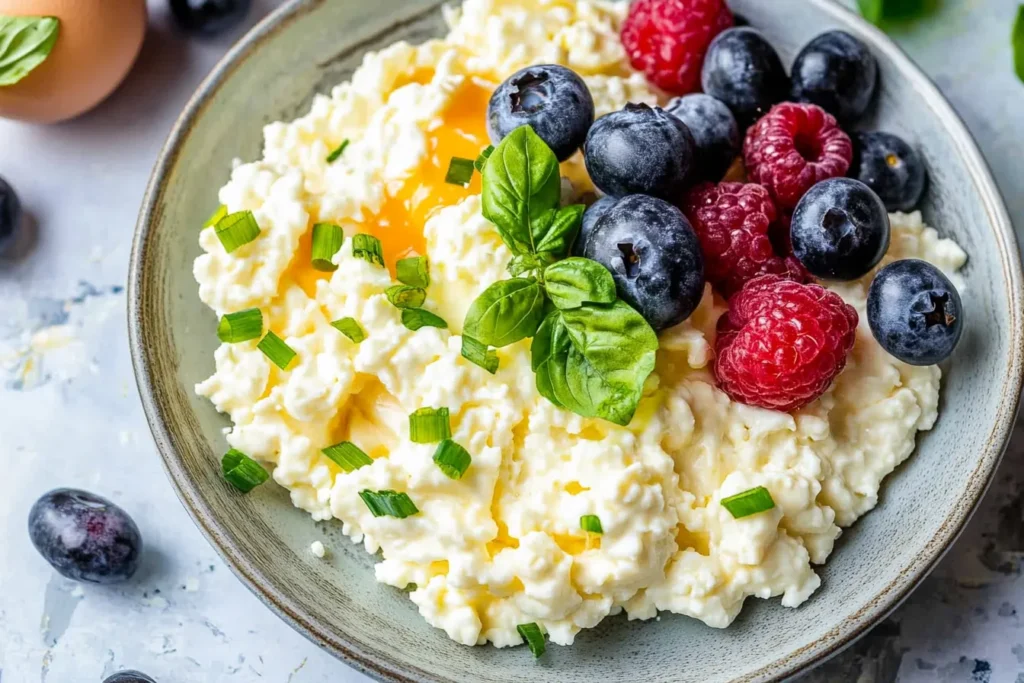Table of Contents
Does cottage cheese melt when you bake it? The answer isn’t as simple as a yes or no. Its behavior depends on several factors, including its fat content, moisture level, and the temperature at which it’s baked. Understanding these elements is crucial for successfully incorporating cottage cheese into your baked creations.
The Surprising Science of Cottage Cheese and Baking
Cottage cheese is a fresh, unripened cheese made from curdled milk. Because it’s not aged, it retains a high moisture content. This characteristic significantly impacts how it performs under heat. Different types of cottage cheese, like small curd, large curd, and whipped, also react differently when baked, making it important to choose the right kind for your recipe.
Fat Content and Melting Point
The fat content of cottage cheese plays a crucial role in its melting behavior. Full-fat cottage cheese, with a higher fat percentage, tends to soften and spread more evenly when heated. Low-fat or non-fat varieties, however, are more likely to dry out or become rubbery because they lack the fat necessary for a smooth melt. Therefore, selecting a higher fat content is generally preferable for baking applications (Does cottage cheese melt when you bake it?).
Moisture Levels and Texture
Another critical aspect is the moisture level. Cottage cheese contains a considerable amount of water, which evaporates during baking. This can lead to a change in texture, sometimes resulting in a drier or slightly grainy consistency. To mitigate this, consider draining excess liquid before adding it to your recipe. Furthermore, combining it with other ingredients that retain moisture, such as eggs or sour cream, can help maintain a desirable texture (Does cottage cheese melt when you bake it?).

Does Cottage Cheese Melt? Understanding the Transformation
While cottage cheese doesn’t melt in the traditional sense like cheddar or mozzarella, it undergoes a significant transformation in the oven. Instead of forming a gooey, stretchy mass, it softens, and its curds tend to blend together. The degree to which this happens depends on the aforementioned factors of fat content and moisture (Does cottage cheese melt when you bake it?).
Softening and Blending
When baked, the curds in cottage cheese soften and meld, creating a smoother, more cohesive texture. This is particularly noticeable in recipes like cheesecakes or casseroles, where it contributes to a creamy, rich consistency. The heat essentially relaxes the protein structure, allowing the curds to integrate with the other ingredients (Does cottage cheese melt when you bake it?).
Preventing a Watery Outcome
One common issue is the potential for cottage cheese to release excess water during baking, resulting in a watery or separated texture. This is more likely to occur with lower-fat varieties. To counteract this, you can drain the cottage cheese using a cheesecloth or fine-mesh sieve before incorporating it into your recipe. Additionally, ensuring your oven temperature is accurately calibrated can prevent overbaking, which exacerbates moisture loss (Does cottage cheese melt when you bake it?).
7 Secret Tips for Baking with Cottage Cheese
Here are 7 essential tips to ensure baking success when using cottage cheese in your recipes. These range from selecting the right type of cottage cheese to mastering oven temperatures.
1. Choose Full-Fat Cottage Cheese
Opt for full-fat cottage cheese to maximize moisture and prevent a dry, rubbery texture. The higher fat content facilitates a smoother, more even distribution of flavor and texture throughout your baked dish. This is especially crucial in recipes where cottage cheese is a primary ingredient.
2. Drain Excess Moisture
Draining the cottage cheese removes excess whey, preventing a watery consistency in your final product. Use a cheesecloth or fine-mesh sieve to gently press out the liquid for about 30 minutes before incorporating it into your recipe. This simple step can significantly improve the overall texture (Does cottage cheese melt when you bake it?).
3. Combine with Binding Agents
Mixing cottage cheese with binding agents such as eggs, flour, or cornstarch helps to create a more cohesive structure. These ingredients absorb moisture and provide additional stability, preventing the cottage cheese from separating or becoming grainy during baking.
4. Control Oven Temperature
Maintain a consistent and accurate oven temperature to prevent overbaking. Overbaking leads to excessive moisture loss, resulting in a dry and unappetizing texture. Use an oven thermometer to ensure your oven is properly calibrated and bake at the recommended temperature.
5. Incorporate Moist Ingredients
Adding other moist ingredients, such as sour cream, yogurt, or ricotta cheese, can help to maintain a creamy texture. These ingredients complement the cottage cheese and provide additional moisture, preventing it from drying out during baking (Does cottage cheese melt when you bake it?).
6. Avoid Overmixing
Overmixing can lead to a tough texture in baked goods containing cottage cheese. Mix only until the ingredients are just combined. Avoid excessive stirring, as this can develop gluten and result in a less tender product (Does cottage cheese melt when you bake it?).
7. Experiment with Flavors
Cottage cheese readily absorbs flavors, making it a versatile ingredient for both sweet and savory dishes. Experiment with different herbs, spices, and extracts to create unique and delicious flavor combinations. From cinnamon and vanilla to garlic and dill, the possibilities are endless.

The Amazing Versatility of Baked Cottage Cheese
The versatility of cottage cheese in baked dishes is truly remarkable. It can be used in a wide variety of recipes, from breakfast casseroles to desserts. Its mild flavor and creamy texture make it an excellent addition to any culinary creation (Does cottage cheese melt when you bake it?).
Savory Applications
In savory dishes, cottage cheese can be used to add moisture and richness to casseroles, quiches, and stuffed vegetables. Its subtle tanginess complements a variety of ingredients, from herbs and spices to vegetables and meats. Consider using it in lasagna, spinach dip, or as a filling for bell peppers (Does cottage cheese melt when you bake it?).
Sweet Applications
In sweet dishes, cottage cheese can be used to create creamy cheesecakes, pancakes, and muffins. Its mild flavor pairs well with fruits, extracts, and spices. Use it in ricotta pancakes, lemon cheesecake, or as a filling for sweet crepes (Does cottage cheese melt when you bake it?).
Does Cottage Cheese Melt When You Bake It? A Final Summary
So, does cottage cheese melt when you bake it? While it doesn’t melt in the traditional sense, it transforms into a smoother, creamier version of itself. By understanding how different factors influence its behavior and by following the tips provided, you can successfully incorporate cottage cheese into your baked creations and enjoy its unique flavor and texture. The secret to perfect baked cottage cheese lies in choosing the right type, controlling moisture, and mastering oven temperatures (Does cottage cheese melt when you bake it?).
Understanding Different Types of Cottage Cheese
The world of cottage cheese isn’t monolithic. Different types exist, each with its unique characteristics. Selecting the right one can significantly impact the final result of your baked dish. Understanding these nuances is key to achieving baking perfection.
Small Curd vs. Large Curd
Small curd cottage cheese has a finer, more delicate texture, making it ideal for recipes where a smooth consistency is desired. Large curd cottage cheese, on the other hand, has a chunkier texture that adds visual appeal and a more pronounced bite. The choice depends on your preference and the specific requirements of your recipe (Does cottage cheese melt when you bake it?).
Creamed vs. Dry Curd
Creamed cottage cheese has cream added to it, which enhances its richness and moisture content. It’s an excellent option for recipes where a creamy texture is paramount. Dry curd cottage cheese, conversely, has no cream added, resulting in a drier, more crumbly texture. This type is suitable for recipes where you want to control the moisture level more precisely.
Whipped Cottage Cheese
Whipped cottage cheese is airier and lighter than regular cottage cheese. It incorporates air during processing, creating a fluffy texture. This variant is best suited for light and delicate recipes, where its airy consistency can contribute to a softer, more tender final product (Does cottage cheese melt when you bake it?).

Troubleshooting Common Baking Issues with Cottage Cheese
Even with the best preparation, baking with cottage cheese can sometimes present challenges. Identifying and addressing these common issues can help you achieve consistent and delicious results every time. Let’s explore some typical problems and their solutions.
Grainy Texture
A grainy texture is often the result of overbaking or using low-fat cottage cheese. To prevent this, ensure you’re using full-fat cottage cheese and that your oven temperature is accurately calibrated. Additionally, consider adding a small amount of cornstarch or flour to the mixture to help stabilize the texture (Does cottage cheese melt when you bake it?).
Separation of Liquids
The separation of liquids can occur when cottage cheese releases excess whey during baking. This is more common with lower-fat varieties or when the cottage cheese hasn’t been drained properly. Draining the cottage cheese before use and using binding agents can help prevent this issue (Does cottage cheese melt when you bake it?).
Rubbery Texture
A rubbery texture typically results from using low-fat cottage cheese or overbaking. Full-fat cottage cheese provides the necessary fat content for a smooth, tender texture. Avoid overbaking by monitoring the internal temperature of your dish and removing it from the oven when it’s just set.
Lack of Flavor
Cottage cheese has a mild flavor, so it’s important to enhance it with other ingredients. Experiment with different herbs, spices, and extracts to create unique and delicious flavor combinations. Don’t be afraid to get creative and explore different flavor profiles to find what works best for your taste.
FAQ
Baked Cottage Cheese Eggs
Baked cottage cheese eggs are a high-protein breakfast option. Mix cottage cheese with eggs, seasonings, and vegetables, then bake until set. This creates a fluffy and satisfying dish.
Why add cottage cheese to eggs?
Adding cottage cheese to eggs enhances the texture and adds a creamy richness. It also boosts the protein content, making your breakfast more filling and nutritious.
Can you cook with cottage cheese in the oven?
Yes, you can cook with cottage cheese in the oven. It’s a versatile ingredient for both savory and sweet dishes, adding moisture and a creamy texture to recipes like casseroles, cheesecakes, and baked eggs.
Why are my cottage cheese eggs so watery?
Cottage cheese eggs can become watery if the cottage cheese isn’t drained properly or if too much liquid is added during preparation. Ensure you drain the cottage cheese before mixing it with the eggs, and avoid adding excess milk or water.

